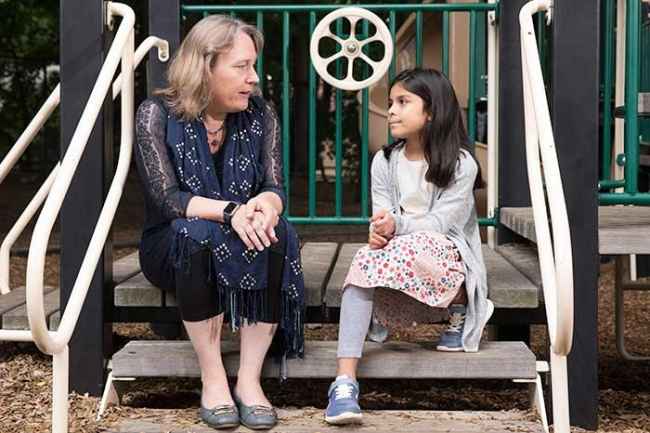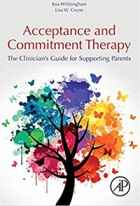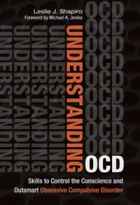Everything You Need To Know About OCD in Kids and Teens
Listen up, parents and teachers: OCD can be a monster
March 22, 2024
While working on a project together, you see a friend packing up their work supplies in a very neat fashion. You can’t help but point out that they’ve organized all their pens to be lined up in order of color and all facing the same direction in their box. “Oh,” they reply. “That’s just my OCD.”
While often thought of as a condition related to neatness and particularness, OCD is often so much more.
Children can be particularly affected by OCD. The onset of symptoms can begin at any time, sometimes as early as three years old.
Parents and teachers need to understand the risk factors to make sure that children and teenagers who are at risk of developing OCD receive appropriate attention.
When treated properly, OCD can be controlled. If it goes unaddressed, it could lead to serious quality-of-life issues, not only for the child but also for family members.
Keep Reading To Learn
- The truth about OCD
- How to recognize symptoms of OCD in children and adolescents
- How to successfully manage and treat OCD in young people
What Is OCD?
Obsessive compulsive disorder is highlighted by a pattern of unwanted and intrusive thoughts, fears, images, or sensations that lead to feelings of distress (including anxiety, disgust, “not just right” sensations) and repetitive behaviors aimed at canceling out that distress.
Usually, these unwanted thoughts are called obsessions. Unwanted, repetitive behaviors or mental acts are called compulsions.
Throughout life, most people will experience unwanted thoughts every so often. If the person doesn’t have OCD, these unwanted thoughts won’t cause much distress because they won’t be interpreted as meaningful. The hallmark of OCD is that obsessions and compulsions lead to a clinically adverse impact on the life of a child.
For example, unwanted thoughts might be so bad that children have trouble sleeping at night. The repetitive behaviors may be so impactful and obstructive that the child has trouble leaving the house to go to school, play sports, or participate in their daily routine.

OCD can be devastating for a child or teen, but there’s hope for those who receive proper psychiatric care
The good news is that there has been plenty of research into OCD, and there are treatment options available. Similar to other mental health disorders, the sooner this condition is diagnosed, the faster it can be treated.
For children to get the care they need, it is important to take an in-depth look at the obsessions and compulsions that fuel OCD.
Obsessions: What Are They?
Obsessions, as they relate to OCD, are fears that children, teenagers, and other individuals cannot stop thinking about. People living with OCD are usually aware that something is “off,” and they often understand that the thoughts they are having are not normal.
These thoughts can make them anxious, and despite their best efforts, they cannot seem to stop thinking about them.
Some of the most common examples of obsessions include:
- Fearfulness that they are going to die or get sick, no matter what they do
- Concern that a loved one is going to end up getting sick, hurt, or killed
- Worry that they have broken a rule and deserve to be punished severely for it
- Fear of touching items because they are potentially dirty
- Obsession with making sure that every object is placed in a certain, even, orderly manner
- Worry that unless something is done in a specific order, it is going to lead to a bad outcome
The truth is that everyone has unwanted thoughts from time to time. The difference between occasional unwanted thoughts and OCD is that, in OCD, children cannot stop thinking about these thoughts and may be paralyzed by them. Often, these obsessions are so bad that kids cannot think about anything else.
Compulsions: What Are They?
For a child to have OCD, they need to have both obsessions and compulsions.
Compulsions are behaviors or mental acts that are typically repetitive and rigid in nature. These compulsions often take the form of rituals and are designed to counteract stress or prevent fearful outcomes.
Kids with OCD have to do these behaviors over and over again in a certain order. If they do not, the obsessions take over, and they are worried that there will be a negative outcome. These behaviors might involve safety, cleanliness, orderliness, or symmetry. They have to be done “just right” or children are compelled to start over.
In a sense, these behaviors are rituals that provide children with a source of power. They feel like if they do these repetitive behaviors in a certain way, they can control what happens next.
Some of the most common examples of compulsions include:
- Having to wash or clean things in a certain way every time
- Thinking phrases over and over again until it “feels right”
- Having to erase and rewrite, redo, or reread things in a certain manner multiple times
- Repeating a certain word or phrase much more often than is necessary until it is said an exact number of times or in exactly the right way
- Checking every door in the house multiple times to make sure that it is locked or passing in and out of doors several times in a row
- Inspecting every light in the house to make sure it is turned off before leaving
- Checking each homework assignment a certain number of times to make sure it was done properly
- Chewing each bite on each side of the mouth the same number of times
- Having to place everything in a specific, even, symmetrical order
- Counting all items and objects to certain good numbers to avoid unlucky numbers
It’s important to note that compulsions often arise out of adaptive behaviors. For example, it is good for children to double-check their homework to make sure it is done properly.
On the other hand, if children end up checking their homework a dozen times to the detriment of other activities, this starts to have a clinically adverse impact on not only their life but the lives of family members as well.
The same can be said of checking to make sure that lights are turned off and doors are locked. It is good to make sure that the house is safe before leaving. However, if this prevents the family from leaving the house, this becomes a major issue.
What Is Perfectionism?
Is perfectionism a form of OCD? How can we support kids and teens who struggle with perfectionism? Watch now to learn more.

How Do You Recognize OCD in Children?
It’s important for individuals, such as parents, teachers, and athletic coaches, to be able to recognize the potential signs of OCD in children. The sooner you can intervene at the start of a mental health challenge, the better their chance for a successful outcome.
There are lots of normal developmental rituals that are not attributable to OCD, like bedtime rituals. However, if a ritual is starting to affect how a child functions, that can help identify if it’s more than a routine and may point to a sign of OCD.
OCD often develops slowly over time. With a gradual onset of symptoms, coupled with a parent’s natural tendency to protect and soothe, it might be hard for adults to pick up on a child’s symptoms of OCD when they start appearing.
It might be easier to recognize the impact that OCD has on the quality of life in children and those around them.
There are several things to watch for that may be signs of OCD.
The following aren’t always signs of OCD. They are examples of behaviors that may signal that a child is in distress and may need help from a trained professional.
Homework
Children with OCD might take an excessive amount of time to complete their homework. This might include children having to read the same line over and over again, having to write each number perfectly for a math problem, or checking homework repeatedly to the point that it takes a very long time to finish.
Leaving the House
Children with OCD might slow the family down when leaving the house.
For example, if a child is taking forever to get ready, they might be checking every door, window, and light to make sure they are in the “right” positions or conditions before leaving. They might throw a temper tantrum about leaving before this routine is finished.
This behavior often makes the family chronically late for activities.
Handwashing
Handwashing is one of the most well-known compulsions when it comes to OCD.
Handwashing may arise out of obsessions related to germs, feelings of disgust, or other forms of contamination such as “bad emotions” or fears of developing chronic stress, anxiety, or worry. If OCD is tied to handwashing, then it might be helpful to look at the hands for signs of raw, bleeding skin.
If children are washing their hands dozens of times per day, the soap is going to make the skin raw, leading to scars, peeling skin, and bleeding.
Drugs or Alcohol
Sometimes when children are struggling to manage a condition, they may turn to substances as a coping mechanism. If a teen is facing mental health challenges, they may feel socially isolated, misunderstood, or overwhelmed. This occasionally leads to substance misuse.
Sleep Habits
OCD often disrupts bedtime or sleep. Children with OCD may have to go through a very specific routine before they get in bed and fall asleep. They may also have a hard time falling asleep if they have intrusive thoughts or worries that are more intense at night. If this routine is disrupted for any reason, they have to start the entire routine over.
It is not unusual for OCD to lengthen the bedtime routine by 30 minutes, an hour, or even longer. This deprives children of much-needed sleep, which impacts school performance, emotional development, and relationships with their peers and family members.
If sleep is disrupted consistently it can also negatively impact the effectiveness of OCD therapies, including CBT.
Keep in Mind
These behaviors do not include every way that OCD manifests in kids. It also does not mean that if a child experiences difficulty with these, then they have OCD.
These are several examples where a child may have uncomfortable thoughts, feelings, or sensations that are followed by behaviors or avoidance to feel relief from their discomfort or fear.
If this discomfort-relief cycle causes family distress or dysfunction, parents should consider speaking with a trained professional about the possibility of OCD.
Watch Now!
Dr. Elizabeth McIngvale shines a light on obsessive compulsive disorder
What Causes OCD in a Child?
Similar to other mental health disorders, there is never a single reason why a child develops OCD.
The following list of risk factors is far from complete but does provide a small glimpse into what could lead to the development of OCD. It is critical to keep in mind that anyone is capable of developing any mental health disorder, including OCD.
Family History, Genetics, and Environment
OCD is heritable. This simply means that if there’s someone in your family who has it, there’s a higher likelihood that a child might have it. The familial pattern of OCD suggests a genetic component, though there are no specific genes that have been identified to be related to OCD at this point.
When discussing nature vs. nurture, it is important to note the environment plays a role as well. Obsessions and compulsions can be learned over time. If children watch family members and others go through OCD, they may latch onto these behavioral patterns as well. As a result, environmental exposures can play a role in the development of OCD.
Stressful Events
Stressful events can be a risk factor for kids with OCD who may have underlying vulnerabilities. Children who experience trauma may develop PTSD, which can be mistaken for OCD.
While unwanted and intrusive thoughts often occur with trauma and post-traumatic stress disorder (PTSD) and can look similar to OCD, trauma focuses on intrusive thoughts based on the past traumatic event, and OCD typically focuses on future uncertainties and attempts to lessen them.
OCD Can Be Treated and Maintained—Yes, There Is Hope!
It is important to note that there is no cure for OCD. At the same time, there are plenty of ways to manage this condition effectively.
Though people diagnosed with OCD will always have to deal with some symptoms, there are very effective ways to control obsessions and compulsions. Treatment can lead to improvements in quality of life, even if there are minimal symptoms that have to be managed regularly. Over time and with effective treatment, OCD may not have any impact on someone’s quality of life.
When it comes to the treatment of a child with OCD, it is important to approach this comprehensively. When all facets of OCD are addressed appropriately, children have the best chance of making a meaningful recovery.
Several components play a role in the treatment of every child with OCD. Like each child’s uniqueness, every diagnosis of OCD will respond in its own way to different treatments, and as a result, may require tailoring treatments to the individual to see what works best.
Therapy
Cognitive behavior therapy, usually shortened to CBT, is an effective treatment method for people with OCD. This therapy, and others similar to it, helps patients connect behaviors and thoughts.
One of the most important components of CBT is called exposure and response prevention therapy. The goal of this type of therapy is to expose children to a feared object or obsession gradually.

With proper treatment, young people who struggle with OCD can live fulfilling and healthy lives
For example, a child who is afraid of germs might be exposed to dirt. Then, the child, with the guidance of a mental health professional, learns to resist the urge to complete compulsive rituals.
As OCD affects everyone in the family, parents and siblings need to learn how to best support children. Family-based approaches to therapy have been proven to be very successful. Also, there are even parent-led approaches to therapy for kids who are reluctant to go to treatment. The parent learns how to teach their child coping skills.
Even though this type of therapy takes time, it has been shown to vastly improve the quality of life in children with OCD.
Medications
Certain psychiatric medications can help children control the obsessions and compulsions that go along with OCD. If behavioral treatment is difficult to access or appears to be mildly effective, then a serotonin reuptake inhibitor (SRI), a specific class of antidepressant, may be helpful to add to the child’s care plan.
Some of the most common antidepressants that might be used in children that have been diagnosed with OCD include:
- Anafranil (clomipramine) is used in children ten years of age or older
- Fluvoxamine is used in children eight years of age or older
- Prozac (fluoxetine) is used in children seven years of age or older
- Zoloft (Sertraline) is used in children six years of age or older
If considering medication, parents should speak with doctors in depth about all possibilities to understand the risks and benefits of each medication.
All psychiatric medications have potential side effects. Parents should understand possible side effects and the chances of these side effects developing, and they should know how to spot them, and when to contact their provider about potentially stopping medication.
Many children who are placed on medication for OCD may be able to come off medication once they have learned exposure and response prevention skills and use them regularly.
Each OCD journey is different and should be treated as such by providers and parents alike. For some young people and their families, once-weekly outpatient visits aren’t enough. If that’s the case, it may be helpful to consider getting a consultation from a psychiatrist for medication.
Additional options include a higher level of care, like intensive outpatient or residential treatment or a parent-only approach to help through familial support.
What Should I Do If My Child Might Have OCD?
Parents, caretakers, and family members need to remain vigilant and understand that there is nothing wrong with asking for help for their child. Also, kids and teens need to know that it’s perfectly okay—and normal—to reach out for help if they are feeling troubled.
It is important to note that children with OCD are not damaged, broken, or harmed beyond repair. When children with OCD are approached with sympathy and understanding, it is easier for them to open up about their problems.
If you think you know someone who may be struggling with OCD, the first step is to not panic. While the disorder may feel crippling, there are many ways to get help that is tailored to what’s needed for each child. Seeking help—and treatment—can provide a child and their family with the tools to feel empowered and in control of their mental health.
A potential diagnosis of OCD should be discussed with the child’s care team to determine the next steps. Call your primary care physician or a local mental health facility, like McLean, to find the care you need.
How Does Someone Get Formally Diagnosed With OCD?
Several steps must take place to properly diagnose a child. Usually, this diagnosis is going to be made by a trained professional, such as a psychiatrist or psychologist, along with assistance from other doctors or health care providers, such as a pediatrician.
What To Expect
An evaluation to determine a diagnosis may include both self- and parent-reporting questionnaires and personal interviewing. These interviews include specific questions to identify the presence of obsessions and rituals.
A trained professional sits down and speaks with a child about feelings, thoughts, symptoms, and behavioral patterns. The goal is to identify any specific obsessions or compulsions.
Then, a psychological evaluation takes place in an attempt to identify the reason why these obsessions and compulsions are present. There has to be an anxiety or fear of a negative or “not right” experience that might happen if things are not done in a certain way.
Finally, it is important to determine whether or not these behaviors harm the child’s quality of life. During this evaluation, the evaluator often speaks with the family members and friends as well.
To make the official diagnosis, the psychiatrist uses criteria that are published in the Diagnostic and Statistical Manual of Mental Health Disorders, usually shortened to DSM-5. This is published by the American Psychiatric Association and guides mental health professionals.
In diagnosing OCD, it is important to rule out alternative causes of this behavior. Therefore, a physical exam might take place to check for symptoms and problems that could be related to complications of OCD or a possible alternative diagnosis.
If this process is completed and the child meets the criteria for OCD, the treatment and recovery process can begin.
Help Your Child Feel More Like a Kid
Whatever mental health difficulties your child may be dealing with, McLean is here to help. Contact us today at 617.855.2820 to learn more about treatment options for children, teens, and young adults.

What You’ve Heard About OCD Likely Isn’t True
Amongst mental health disorders, obsessive compulsive disorder is one of the most common. Despite this, there are prominent misconceptions about how OCD presents in individuals that can make it challenging for many to understand the condition.
Each case of OCD is as unique as the person diagnosed with it, and there are many misconceptions about the disorder. Along with many people loosely using the terminology “being OCD” to describe perfectionism, several myths have emerged about OCD.
Myth: People With OCD Want Everything To Be Perfect
People diagnosed with OCD may exhibit perfectionism-related behaviors or have perfectionism-related obsessions. However, they typically stem from attempts to reduce anxiety or distress associated with uncertainty or a specific feared outcome—not because they want everything to be perfect.
Myth: People With OCD Are Just Germaphobes
While it is true that some obsessions and compulsions are related to germs and handwashing, OCD comes in many shapes and forms and often does not manifest only with an aversion to germs.
Myth: People With OCD Should “Just Relax,” and It’ll Go Away
OCD is a serious mental health disorder. It is a medical condition that deserves the same level of care and compassion as cancer, diabetes, or heart disease. Those of us with OCD would love to relax. However, that may not be achievable through being told to calm down.
Want More Info?
Looking for even more information about OCD in children? You may find these resources helpful.
Interesting Articles and Videos and More
Learn more about youth mental health and what you can do if your child is displaying signs of OCD.
- Everything You Need To Know About Child & Teen Mental Health
- Video: Anxiety and OCD in Kids and Teens 101
- Video: Anxiety and OCD in the Classroom – Parents, Schools, and Health Care Professionals
- Everything You Need To Know About Stress
- Video: Diagnostics – OCD, Anxiety, ADHD, and Phobias in Kids and Teens
- Video: Effective Treatment for Anxiety Disorders and OCD in Kids and Teens
- What Is Sexual Orientation OCD?
- Video: Building Confidence in Children and Teens
- Video: Redefining Self-Care in Kids & Teens
- Patient Perspective: Reflections 20 Years After Seeking Treatment for OCD
- Understanding Religious Scrupulosity
- Deconstructing Stigma – Sean’s Story
- The OCD Stories - podcast
- Video: Regaining Control Over OCD
- Anxiety and OCD in Kids and Teens: A Course for Parents, Educators, and Professionals
- Find all of McLean’s resources on OCD and child and teen mental health
Helpful Links
These organizations may also have useful information:
International OCD Foundation
The mission of the International OCD Foundation is to help people affected by obsessive compulsive disorder and related disorders to live full and productive lives. The IOCDF aims to increase access to effective treatment through research and training, foster a hopeful and supportive community for those affected by OCD and the professionals who treat them, and fight stigma surrounding mental health issues.
OCD Massachusetts
As a non-profit affiliate of the IOCDF, OCD Massachusetts aims to provide public and professional education about OCD to raise awareness and improve the quality of treatment provided in Massachusetts. They also work to improve access to resources for those with OCD and their families and advocate and lobby for the OCD community in Massachusetts.
Not Alone Notes
Not Alone Notes is a nonprofit organization that mails free, handwritten letters to people with OCD and related disorders. Their goal is to remind others they aren’t alone, encourage hope, and dispense resources.
Peace of Mind
Now part of the International OCD Foundation, Peace of Mind provides educational resources and access to self-help tools, offers scholarship opportunities, supports professional training programs, and spreads awareness about OCD and related disorders.
Books About OCD

Obsessive Compulsive Disorder: Elements, History, Treatments, and Research
by Leslie J. Shapiro
(ABC-CLIO, 2020)

Stuff That’s Loud: A Teen’s Guide to Unspiraling When OCD Gets Noisy
by Ben Sedley and Lisa W. Coyne
(New Harbinger, 2020)

Acceptance and Commitment Therapy: The Clinician’s Guide for Supporting Parents
by Koa Whittingham and Lisa W. Coyne
(Elsevier, 2019)

Understanding OCD: Skills to Control the Conscience and Outsmart Obsessive Compulsive Disorder
by Leslie J. Shapiro
(Praeger, 2015)



